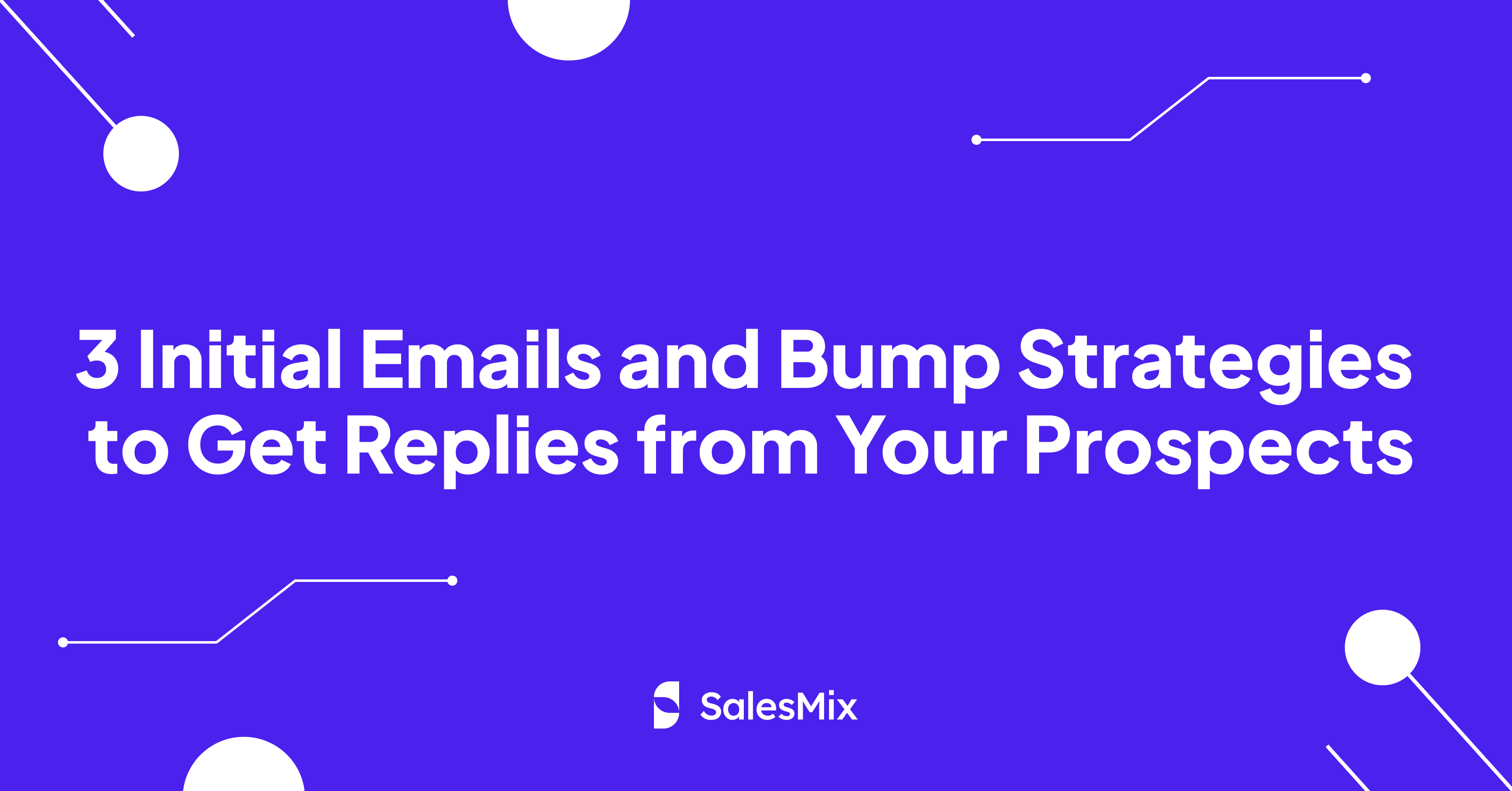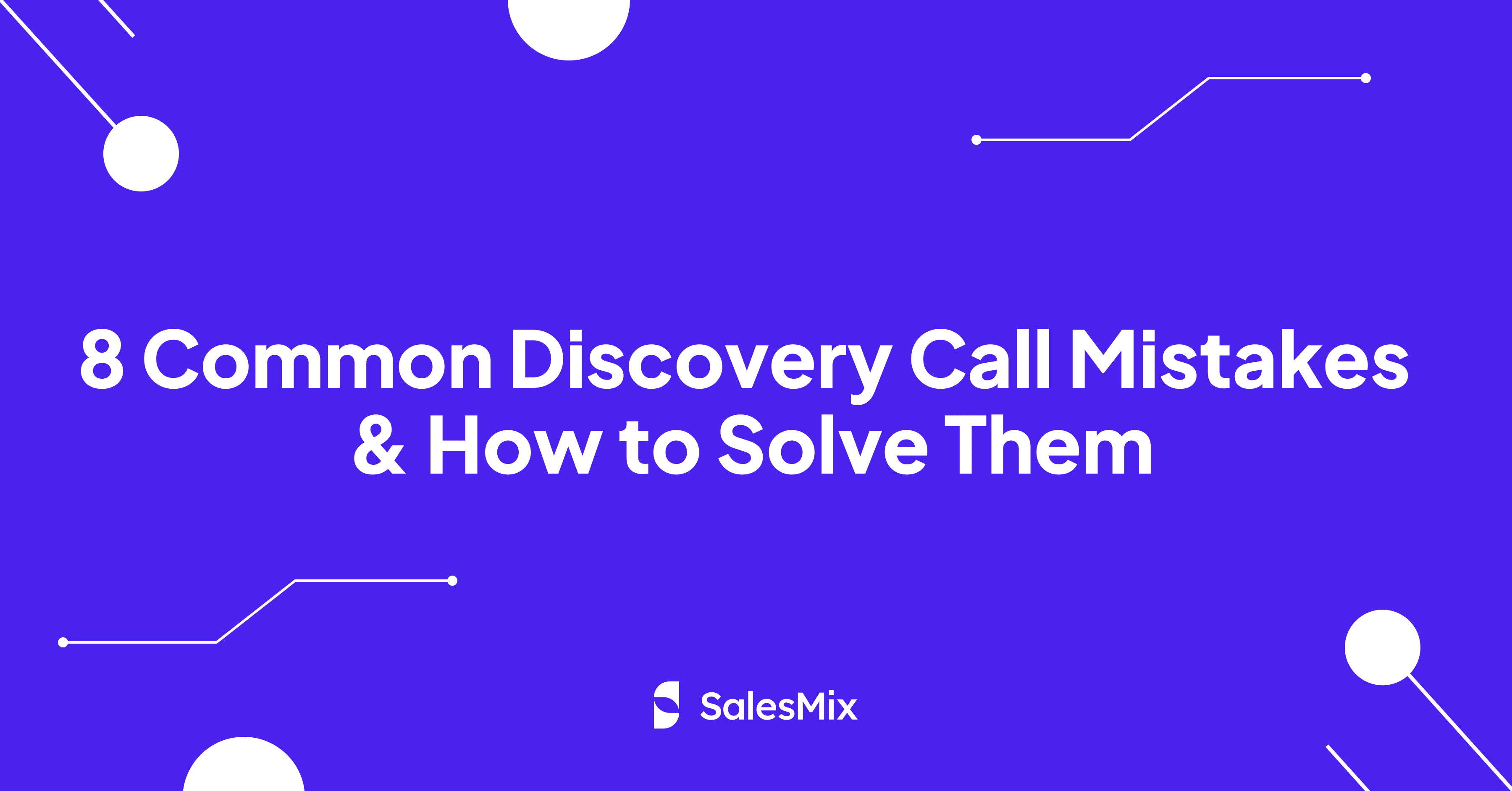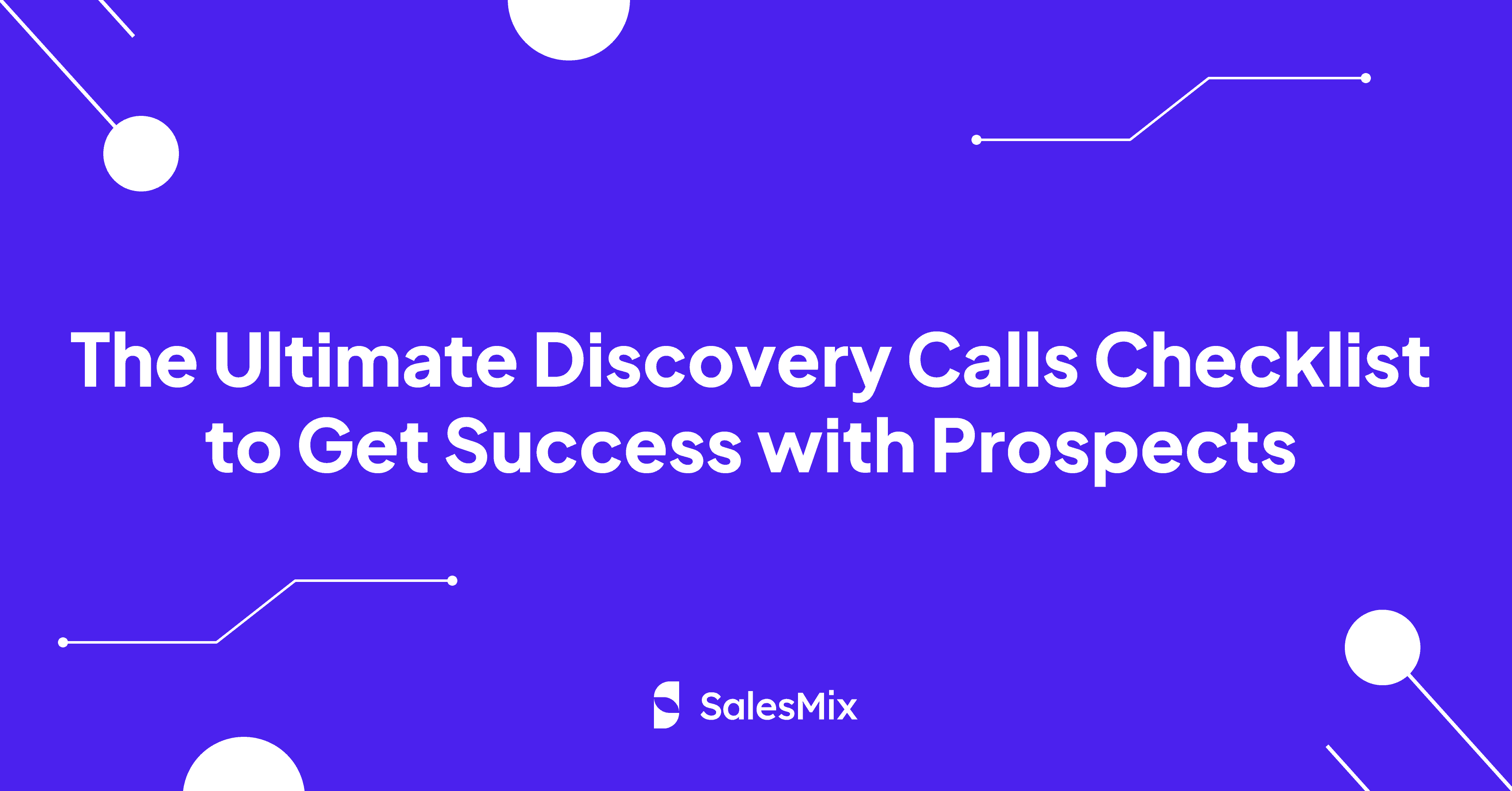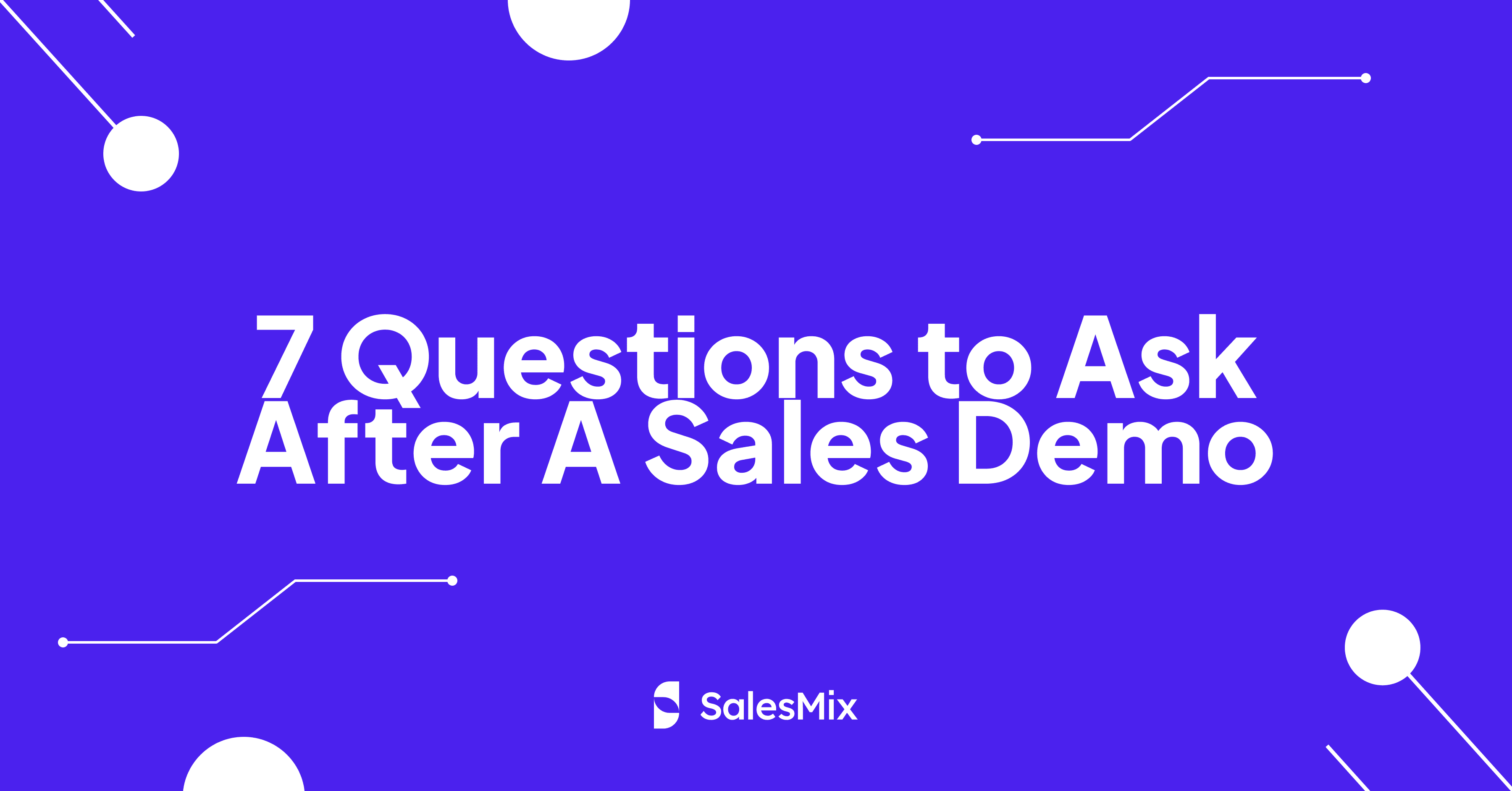Table Of Contents
How often have you sent a perfectly crafted cold email, only to check your inbox days later and find no response? This scenario is familiar to us B2B founders and marketers, where silence can almost be louder than a “no.”
Initial emails and bump strategies can be a powerful tactic to break through the noise and capture the attention of your target audience. The first email in this sequence sets the stage; it should be direct, relevant, and personalized to understand your prospect’s specific challenges. However, the real strength of this strategy lies in the follow-up, or “bump” emails. They are strategic reinforcements that each add value and build upon the foundation laid by the initial contact.
I will discuss some proven examples of initial emails and bump strategies that will help you create multiple touchpoints to build trust and familiarity and gradually convert prospects.
Why do Initial Emails and Bump Strategies Work?
Initial emails paired with a bump (follow-up) strategy are highly effective for several key reasons:
- First Contact and Persistent Follow-Up: The initial email makes the first contact, introducing the sender’s value proposition, while follow-up emails (bumps) keep the communication alive and catch the recipient at the right moment.
- Timely Introduction and Reinforcement: Sending the initial email in response to a trigger like a website visit ensures relevance and subsequent bumps reinforce the message and increase the impact.
- Visibility and Persistence: The first email puts your brand on the recipient’s radar, and the bump emails ensure it stays there, showing dedication that often convinces recipients to engage.
- Optimization through Feedback: The initial contact provides a baseline response rate, and each bump offers a chance to tweak the message based on recipient interactions for better engagement.
- Relationship Building Through Consistency: Initial emails introduce the sender, and regular bumps demonstrate a commitment to building a relationship, not just closing a sale but fostering trust and rapport over time.
3 Initial Email Frameworks That You Can Follow
We will look at some initial email frameworks that you can adhere to to get consistent results from your efforts to engage prospects in a conversation.
Framework 1
The first proven framework is in the following course of action –
1. Trigger
2. Implication + Pain
3. Social proof (solution)
4. Interest-based CTA
Why does it work?
The opening of the email is crucial as it clearly states the purpose of reaching out and demonstrates an understanding of the recipient’s current challenges. This shows that the sender has done their homework and establishes their credibility from the get-go.
In the latter part of the email, you are shifting the focus to reinforcing the sender’s qualifications by highlighting past successes in similar scenarios. This provides the recipient with a clear picture of the value the sender brings, making the case for why their approach is practical and beneficial.
Template Structure
Hey [name],
Saw you [relevant trigger], Imagine you’re/thought you’d [implication based on trigger]
Usually, our customers struggle [main problem related to ICP]
So [dig into the pain]
We’ve been helping [social proof]
[positive outcome & how your solution did that]
[Soft CTA]
Example
Framework 1 example
You can copy it from here –
“Hey Abdul,
Saw you’re hiring SDRs. I imagine ramping them is a priority.
Most sales leaders struggle to get reps ramped in under 5 months.
This is usually an uphill battle when it comes to hitting the team’s quarterly target.
We helped MixSales’ reps be 100% ramped up in less than 3 months with our methodology.
Worth learning how?”
Framework 2
This framework comprises the following two core elements to show your service’s standard and quality –
1. Competitor
2. Value differentiation
Why does it work?
The framework effectively shifts the reader’s perspective by highlighting the competitor’s shortcomings, which serves as a strategic way to differentiate value. By contrasting your unique strengths against the competitor’s weaknesses, you not only draw attention to your advantages but also create a compelling narrative that resonates with potential customers.
Template Structure
Hey [name], Saw you’re using [specific software or service].
How are you liking it? I know their product is [positive aspect of the product].
However, most of their customers switch to us because they need more [specific feature or functionality].
Could you see this being important to your [relevant team or department]?
Example
Framework 2 example
You can copy it from here –
“Hey Abdul, Saw you’re using MixSales-CRM for CRM.
How are you liking it? I know their product is killer for being organized.
However, most of their customers switch to us because they need more functionality for forecasting and multichannel inbox management.
Could you see this being important to your sales team?”
Framework 3
The third framework is more about making the prospect feel you’ve researched about them and want to help them solve a problem or better their execution process and efficiency. This framework has two things –
1. Bold Observation
2. Soft CTC (Call To Conversation)
Why does it work?
This approach is effective because it immediately captures the reader’s attention with a striking or unconventional statement, piques their curiosity, and engages them emotionally or intellectually. You can leverage the power of surprise or contradiction to hook the prospects and get them more receptive to the subsequent message.
Template Structure
Looks like you’re [relevant action or change], [name].
[Role or group] with [describe their situation or challenge] usually lean on [type of solution or method] to [solve a specific problem or achieve a goal].
Does that sound similar to what you’re doing at [company]?
Example
Framework 3 example
You can copy it from here –
“Looks like you’re hiring reps, Abdul.
Sales leaders with growing teams usually lean on templates to coach cold calling and cold email.
Does that sound similar to what you’re doing at [company]?”
3 Types of Bump Emails That Work
Let’s look at some bump emails that have been proven to work from time to time.
External Resource Bump Email
This type of bump email can come in 2 structures.
Structure 1
The first type of bump mail that leverages offering external resources works in the following flow –
1. Name a resource
2. Follow the idea of the first email
3. Share why it is valuable
4. Mention the first email
Why does it work?
Buyers are aware that you’re trying to sell to them, so branded content can sometimes come across as inherently biased. Introducing a third-party resource can disrupt this perception and offer a fresh perspective that appears more objective and trustworthy.
This approach of increasing content’s relevance and appeal builds credibility on more neutral ground and strengthens the connection with your audience by showing an understanding of their needs and preferences. It makes the interaction feel less like a sales pitch and more like a valuable exchange of information tailored to them.
Template
[Name], do you read [Blog or Resource]?
Assuming you’re [relevant action or task], I thought you’d find it interesting.
The [Resource maker] wrote about how [he/she/they] [accomplished a specific achievement].
They did it [method or unique approach used].
Any thoughts on my last note?
Example
External resource bump email example
You can copy it from here –
“Abdul, do you read SalesMix’s blog?
Assuming you’re ramping those new reps, I thought you’d find it interesting.
The VP of Sales Dev at Instantly wrote about how he scaled her team to a $1.1B acquisition.
They did it without using outdated templates.
Any thoughts on my last note?”
Structure 2
The 2nd structure is more of gaining the prospect’s attention with thought-provoking information. Its framework looks like –
1. Mention numbers and facts
2. Got back to the original article
3. Image (if necessary)
4. Pain link and connection
Why does it work?
Recipients often anticipate a sales pitch in branded content, which can make it seem biased. By introducing a third-party resource, you disrupt these expectations and establish a foundation of trust on neutral ground. Tailoring this content to address their specific interests engages readers and creates a safer, more relatable environment that makes them feel more interested in replying.
Template
[Name], [statistic or surprising fact relevant to the prospect].
I came across this article by [source or author].
Given [relevant task or priority] is a priority, I thought you’d find it interesting.
This trend is only looking to get worse in [future year].
Mind if I share [number] tips on how to avoid it?
Example
External resource bump email example
You can copy it from here –
“Abdul, +64% of new reps fail to ramp successfully.
I came across this article by Instantly.
Given ramping your reps is a priority, I thought you’d find it interesting.
This trend is only looking to get worse in 2025.
Mind if I share 2-3 tips on how to avoid it?”
Thoughtful Bump Email
The structure of this type of bump email is as follows –
1. NEVER just say thoughts
2. Add context + bump
Why does it work?
This strategy accomplishes two crucial objectives:
1. It taps into the reader’s sense of urgency and compels them not to miss out on an important communication.
2. It emphasizes the significance of your email by linking the context of the current message to a personalized note that was previously sent, underscoring its relevance and worthiness of their attention.
Template
Hey, [name],
Given that you’re [relevant action or situation], I thought this would be [state significance, e.g., top of mind/worth discussing].
Do you have any feedback on my last message?
Example
Thoughtful bump email example
You can copy it from here –
“Hey, Abdul,
Given that you’re growing the sales team, I thought this would be top of mind/worth discussing.Do you have any feedback on my last message?”
The Clarification Bump Email
This approach’s structure looks like –
1. Restate the context for why you’re reaching out
2. Seek to clarify part 1: “What we do”
3. Seek to clarify part 2: “Why that’s relevant”
4. Call-to-conversation (CTC)
Why does it work?
It mainly works since this approach offers a chance to show how the solution directly addresses the recipient’s specific challenge.
Template
Hey [name],
Given you’re [relevant action or situation], I thought [related need or concern] might be at the top of mind.
To clarify, we help [target audience] [main benefit or solution offered] by doing [specific offer/action].
Does that sound like something you’re tackling at [company]?
Example
Clarification bump email example
You can copy it from here –
“Hey, Abdul,
Given you’re growing the sales team, I thought coaching might be at the top of my mind.
To clarify, we help sales leaders cut up to 50% of the ramp-up time by doing [specific offer/action].
Does that sound like something you’re tackling at [company]?”
Implement Initial Mail & Bump Strategies with SalesMix
SalesMix emerges as a powerful ally for simplifying and enhancing the entire process from start to finish in a cold email campaign through automation and optimization. The platform ensures your messages reach their intended audience and spark engagement.
Starting with a robust email warming feature, SalesMix ensures that your initial outreach efforts land in the recipient’s primary inbox. This warm-up process reduces the risk of flagging your emails as spam, thereby preserving your sender reputation. By engaging with a network of automated emails that interact with each other, SalesMix strategically improves your email’s visibility in the inbox.
Automated warmup in SalesMix
SalesMix excels at managing follow-up strategies. If your initial email doesn’t get a response, the platform can automatically send bump emails to keep the conversation going. As we have discussed throughout the article, this automated follow-up is crucial for maintaining engagement without manual effort. It lets you focus on crafting impactful messages rather than managing their delivery.
Automate your follow-up emails with SalesMix.
Personalization is at the core of SalesMix’s strategy for making your emails resonate with recipients. The platform allows for advanced customization using data from your CSV files and utilizes Spintax technology. You can include specific details like the recipient’s name or tailor content to their business context to increase the chances of receiving a response.
SalesMix also includes features that ensure optimal timing and delivery of your emails. You can schedule emails according to your audience’s time zone and verify delivery success with test emails to avoid the spam folder.
Schedule Cold Emails and Bumps with SalesMix
Conclusion
Initial emails and bump strategies can be useful ways to start and foster ongoing conversations with prospects. By aligning your follow-ups to provide incremental value, you create a compelling narrative that encourages responses. Each interaction works as an opportunity to demonstrate your commitment and insight, positioning your brand as a valuable partner in addressing their needs.
To truly capitalize on this strategy, refining and adapting based on the interactions each email prompts is crucial. You need to use the feedback from each campaign to hone your messages. Only then can this adaptive approach improve your chances of getting a reply and build a foundation for relationships beyond the inbox.






